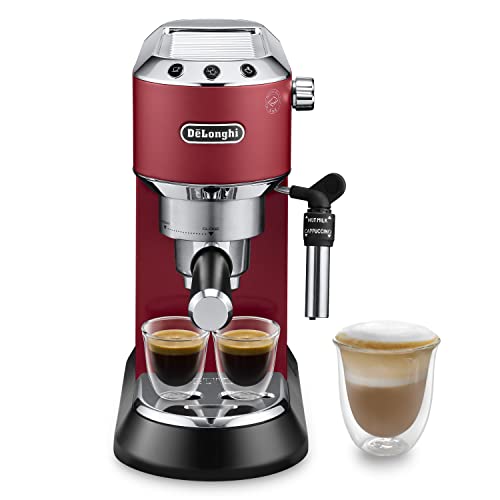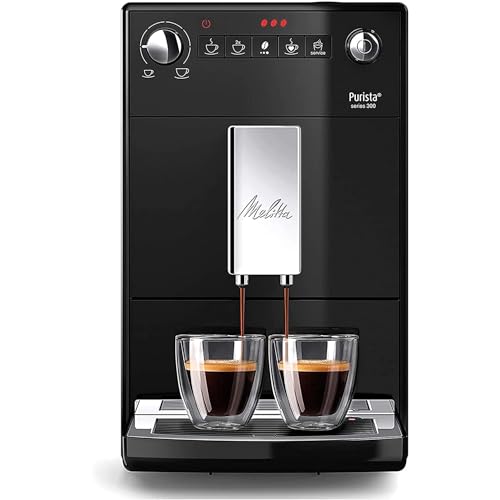A Brief History Of Retro Espresso Machines In 10 Milestones
페이지 정보
작성자 Maybelle 작성일 25-08-01 01:36 조회 39 댓글 0본문
Modern Espresso Machines: A Comprehensive Guide
Espresso has actually become a cornerstone of coffee culture worldwide, captivating enthusiasts with its abundant taste and extreme fragrance. As the demand for quality espresso increases, makers have actually established a variety of modern espresso machines developed to meet diverse choices, ability levels, and budget plans. This post aims to explore the technological improvements, functions, and advantages of modern espresso machines, along with offer readers with useful insights into their use and maintenance.

The Evolution of Espresso Machines
To fully value modern espresso machines, it is essential to understand their evolution. The very first 9 bar espresso machine (please click the up coming post) machine, the leaver-operated machine, was presented in the early 20th century, followed carefully by pump machines in the 1960s. These developments assisted in greater pressure control, ultimately leading to a better extraction procedure.
Today, the landscape of espresso machines includes numerous types:
| Machine Type | Description | Target Audience |
|---|---|---|
| Manual | Requires skill for brewing, lever-operated to manage pressure | Coffee purists, specialists |
| Semi-Automatic | Automation of water shipment; user controls grind and tamp | Home brewers, baristas |
| Automatic | Immediately manages brewing time; needs minimal input | Casual drinkers |
| Super-Automatic | One-touch operation with integrated grinders | Convenience hunters |
| Capsule | Uses coffee pods for ease of use and cleanup | Casual users |
Secret Features of Modern Espresso Machines
Modern espresso machines come geared up with a series of features that cater to various user requirements and choices. Here's a better look:
Pressure Control: The capability to control the pressure during extraction is important for attaining the best espresso shot. Many modern machines included adjustable pressure settings, enabling users to experiment.
Temperature level Stability: Consistent water temperature level is essential for ideal extraction. Machines with dual boilers or PID controllers preserve stable developing temperatures.
Built-in Grinders: Super-automatic machines usually include built-in grinders that allow users to grind fresh coffee beans right before developing.
Interface: Touchscreen shows and programmable settings improve user experience by providing customizable developing alternatives.
Milk Frothing Systems: Integrated steam wands or automatic frothers make it much easier to prepare lattes and coffees.
Self-Cleaning Functions: Many modern machines have self-cleaning choices that simplify maintenance and extend the machine's life expectancy.
Choosing the Right Espresso Machine
When selecting a modern espresso machine, numerous elements should be thought about, including budget, experience level, and preferred performances. Here is a list of considerations:
Tips for Selecting an Espresso Machine:
Determine Your Skill Level:
- Beginners may prefer super-automatic machines.
- Advanced users might delight in manual or semi-automatic options.
Examine Your Budget:
- Espresso machines vary from under ₤ 100 to several thousand dollars. Make sure that your option aligns with your financial strategy.
Examine Feature Preferences:
- Decide whether you require features like a built-in grinder, advanced temperature level control, or boosted milk frothing capabilities.
Consider Space:
- Measure your kitchen area, as some espresso machines can be rather large.
Read Reviews:
- User reviews can offer insight into the machine's dependability and performance.
Upkeep of Modern Espresso Machines
Proper maintenance is important for making sure the durability and optimum performance of an espresso machine. Here are some maintenance ideas:
Regular Maintenance Checklist:
Daily:
- Clean the coffee grounds from the portafilter.
- Wash the water reservoir and fill it with fresh water.
- Tidy the steam wand after each use.
Weekly:
- Run a clean cycle with a descaling option.
- Clean the drip tray and any detachable parts.
Month-to-month:
- Check and change water filters as needed.
- Deep tidy the machine's internal components according to the maker's directions.
FAQs About Modern Espresso Machines
1. What type of espresso machine is best for newbies?
A super-automatic machine is ideal for novices due to its simplicity. It automates the entire procedure, from grinding to brewing, making it simple to use.
2. How do I know if my espresso machine needs descaling?
If you observe a decrease in pressure, sluggish developing times, or mineral accumulation around the machine's components, it might be time to descale.
3. Can I use routine coffee premises in an espresso machine?
No, espresso machines need finely ground coffee to develop the proper pressure for extraction. Routine coffee premises are too coarsely ground and will not produce the wanted outcomes.
4. Are more expensive espresso machines worth the investment?
Higher-priced models frequently provide more features, better construct quality, and improved durability. However, the very best option depends on private choices and how regularly you plan to use it.
5. How frequently should I clean my espresso machine?
Daily cleansing of the portafilter and steam wand is recommended. A complete cleansing routine must be carried out weekly or regular monthly, depending on usage.
The world of modern espresso machines varies and continually evolving, accommodating a large range of coffee enthusiasts-- from casual drinkers to seasoned baristas. Comprehending the features, types, and appropriate upkeep of these machines is essential for making an informed purchase. Whether one seeks the convenience of a super-automatic machine or the hands-on experience of a manual one, there is an espresso machine readily available to satisfy the craving for that ideal cup of espresso.

- 이전글 The 10 Scariest Things About Key Locksmith Car
- 다음글 The 10 Most Scariest Things About Glass Window Door
댓글목록 0
등록된 댓글이 없습니다.

